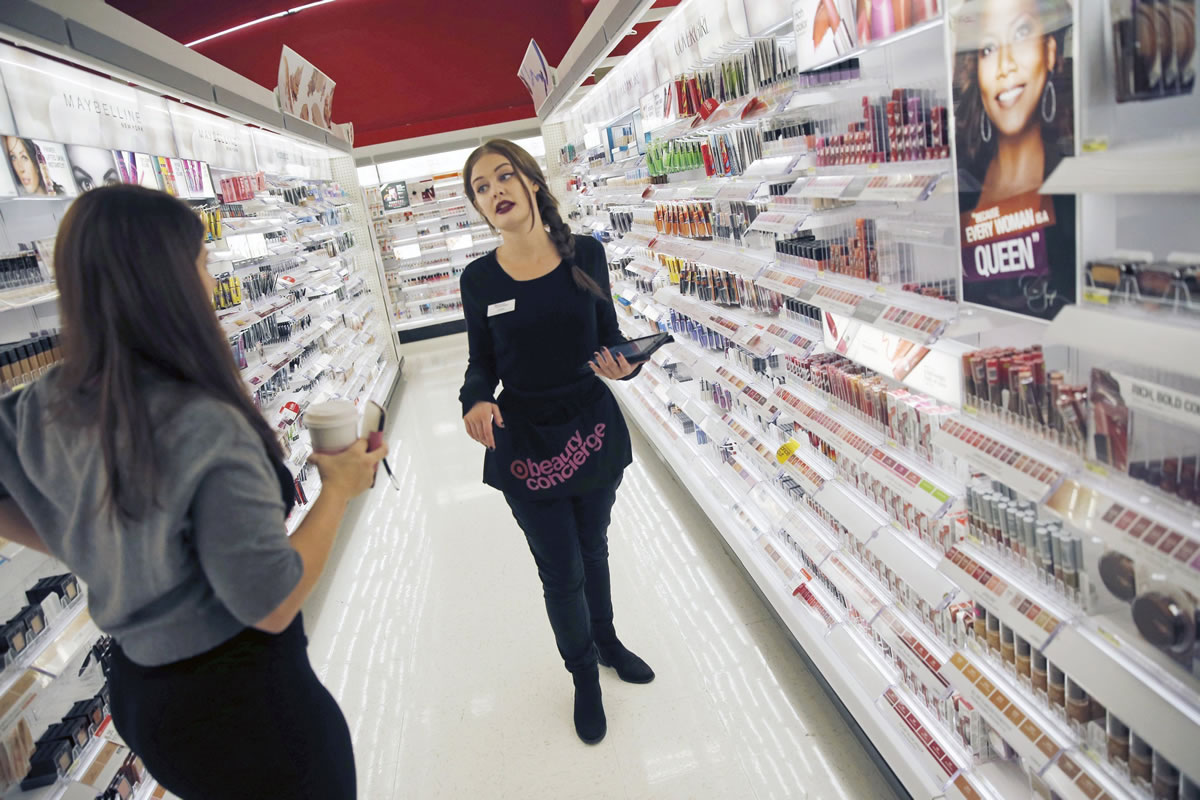MINNEAPOLIS — As a Target “beauty concierge,” young Chelsea Mathison prowls the cosmetic aisles at the retailer’s Nicollet Mall store, sweetly asking shoppers if they need beauty tips and recommendations.
The pixieish clerk seems an unlikely frontline warrior in the Minneapolis-based retailer’s effort to embrace showrooming — where consumers fiddle with products in stores, only to surf their smartphones to see if they can buy the items cheaper somewhere else. Amping up customer service in key product areas such as beauty is one way Target hopes to address the fast-growing showrooming trend, especially as the crucial holiday shopping season approaches.
Showrooming may be a delightful win for value-oriented shoppers, but it has likely made retail executives gnash their teeth.
Not Casey Carl, however. Last month, Target’s president of multichannel declared in a widely read essay on Target’s website that he loves showrooming. Well, he qualified, as long as Target books the sale.
Devising a strategy to do just that means embracing a “utopian” version of Target where consumers seamlessly access bull’s-eye merchandise in stores, on the Web, through social media and via smartphones, Carl said in a recent interview. He calls it a “multichannel journey where the experience is truly personalized. If we do that, ultimately that’s where we win.”
Amy Koo, senior analyst with Kantar Retail in Boston, said that “obviously, the elephant in the room is Amazon,” the $61 billion online marketplace. “In the last year, there have been a lot of adjustments by Target to counter the Amazon challenge, a lot of initiatives, some of which have not been fruitful, but it’s a good start,” she said.
Koo said there now appears to be a new, open attitude about showrooming. “They’re saying, ‘We know we have to do something.’ “
A study by Deloitte Consulting concluded that too many retailers dismiss mobile applications that may spur showrooming as a way to simply drive revenue to their respective websites. With up to 21 percent of total retail sales expected to be mobile-influenced by 2016, “store-based retailers should consider mobile as a strategic imperative because it affects the entire business,” the report says. “Mobile should be used as a strategic lever to boost sales across the business.”
As the Deloitte study pointedly notes: “It should be a C-suite issue, not a minor topic buried at the bottom of the e-commerce division’s to-do list.”
The way smartphones drive commerce is a big-money issue, too. In the next three years, up to $752 billion in retail sales nationwide are expected to be mobile-influenced, although not all will involve showrooming. It could also involve personalized offers or coupons that flash on one’s smartphone in-store.
And, because smartphone ownership is significantly higher among consumers who are 25 to 34 years old, their use of mobile apps while shopping will deeply inform their buying habits as they mature.
Carl concedes “it’s still very early in this revolution,” and different strategies need to be vetted both in stores and online, all of which are aimed at encouraging showrooming in such a way that benefits Target.
To that end, Target began offering free Wi-Fi in stores last year, and it’s rolling out in-store pickup of online orders to its 1,800 stores (meaning free shipping). There’s also a social media digital savings program called Cartwheel that the company built by partnering with Facebook.
And, beyond the beauty concierge service, which has been instituted in 200 stores, Target is testing a new concept called Baby 360 in the Chicago area aimed at new and expecting mothers, a sweet spot in the retailer’s core demographic.
The company says this group spends 63 percent more time online researching impending purchases. Partnering with Baby Center, the company now offers more parenting-related content, product reviews and recommendations online, and store layouts have been adjusted to better suit their needs.
It’s unclear how these strategies will affect Target’s bottom line; and the company does not break out online or mobile sales.
But Richard Feinberg, a professor of retail management at Purdue University, said the hype surrounding showrooming is a bit overblown. “It captures our attention because it’s so obvious and interesting,” he said.
Consumers may respond in surveys that they showroom “because it is a strong self-image positive bias answer” when, in truth, they don’t showroom. When asked a technology question, they tend to answer affirmatively about showrooming because they want to see themselves as “very hip and high-tech.”
About 50 percent of consumers have a smartphone and of that amount, Feinberg estimates, only 15 percent will use it to research or make a purchase. And only 5 percent of that amount are so-called “exploiters” — those who research while they’re in stores and then purchase.



